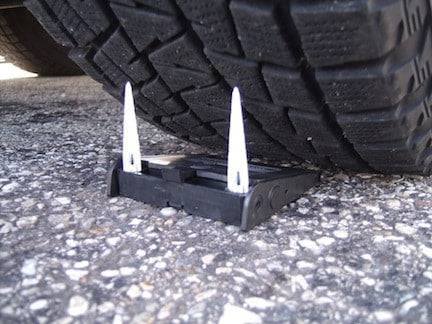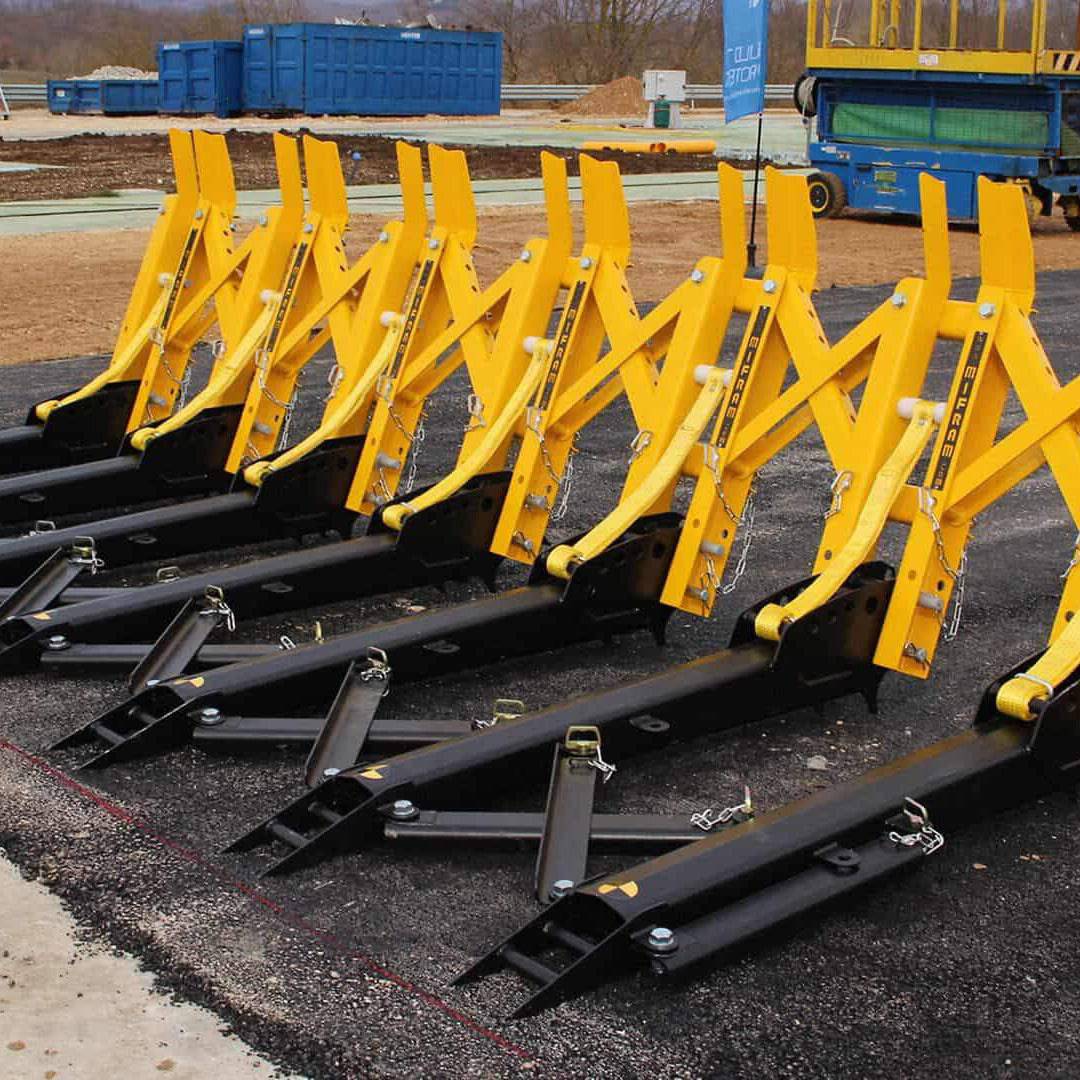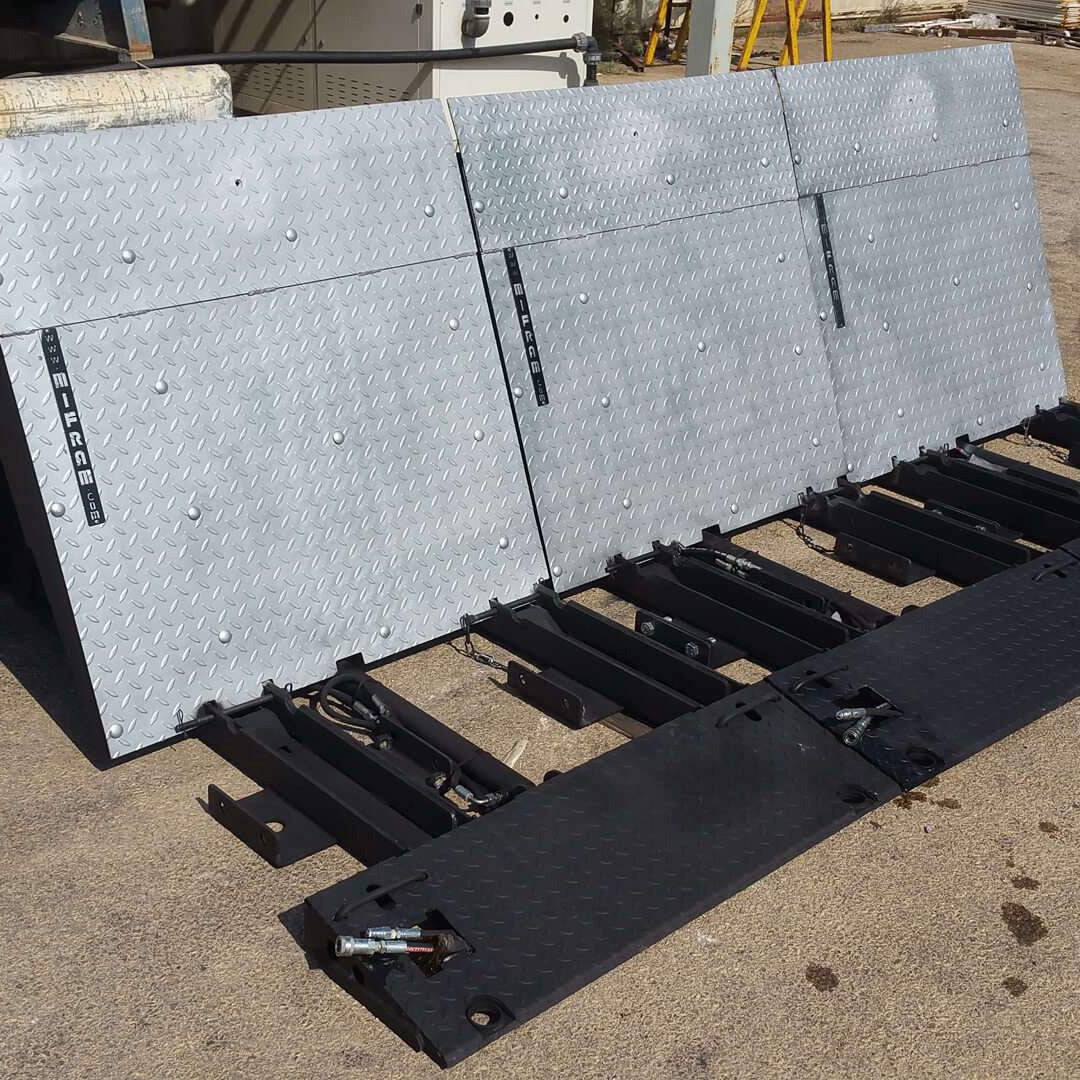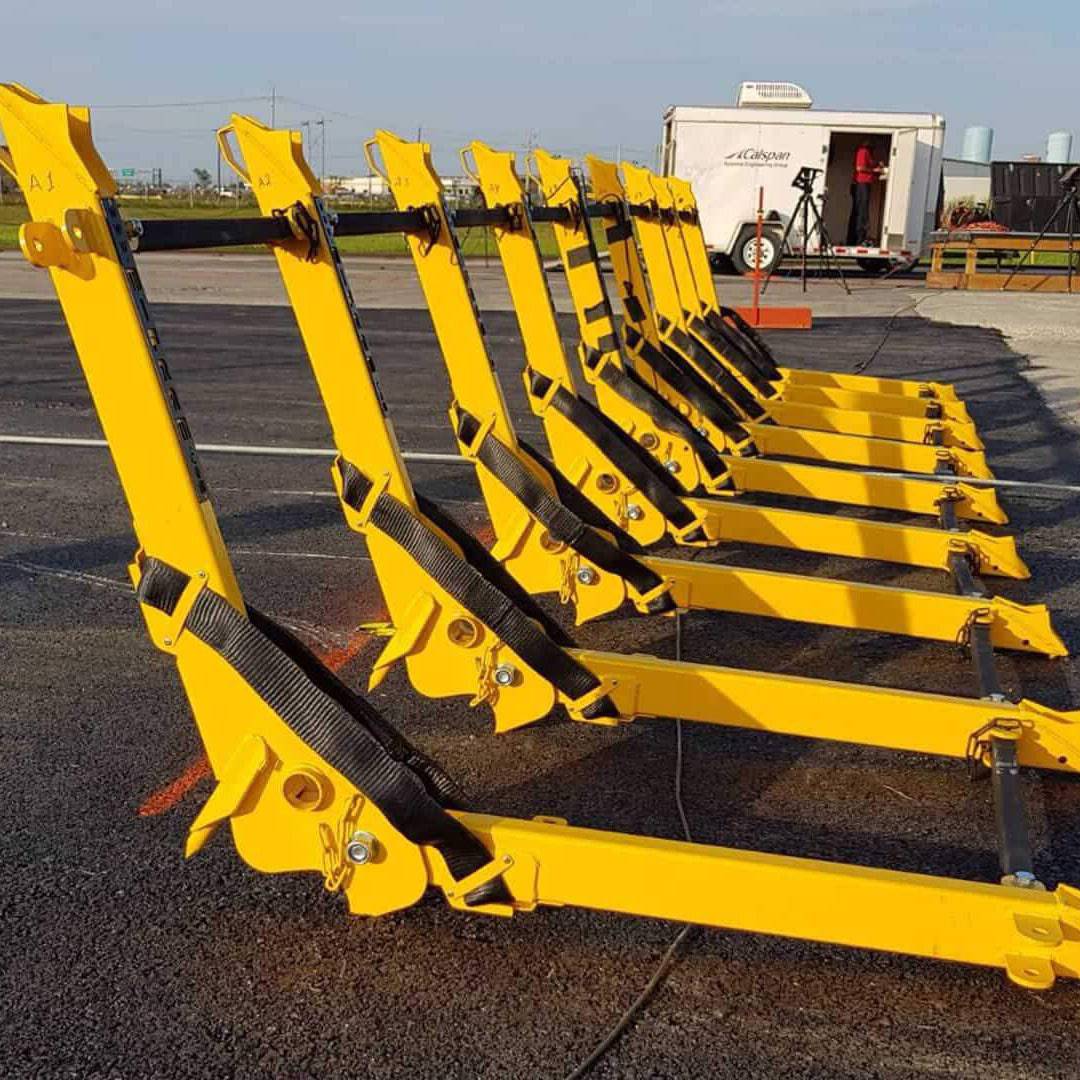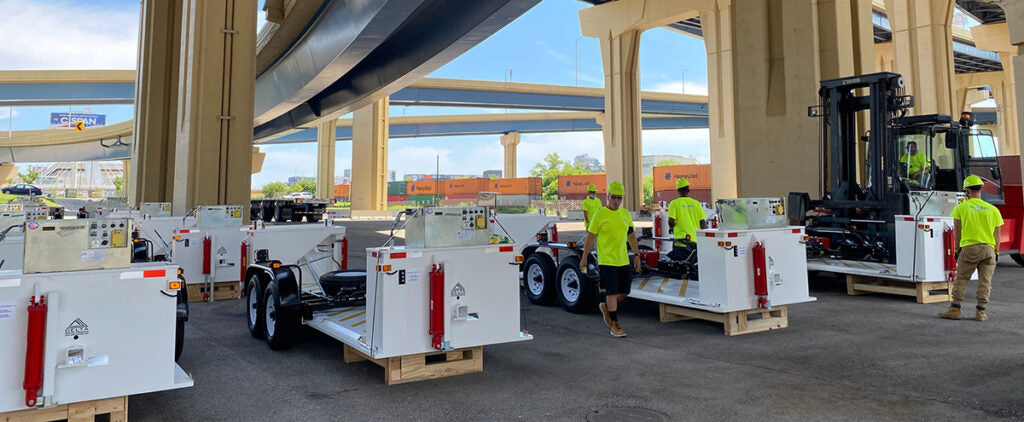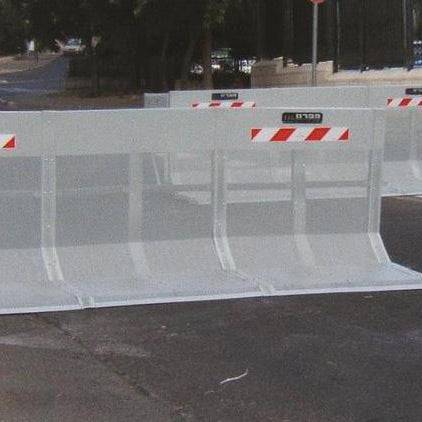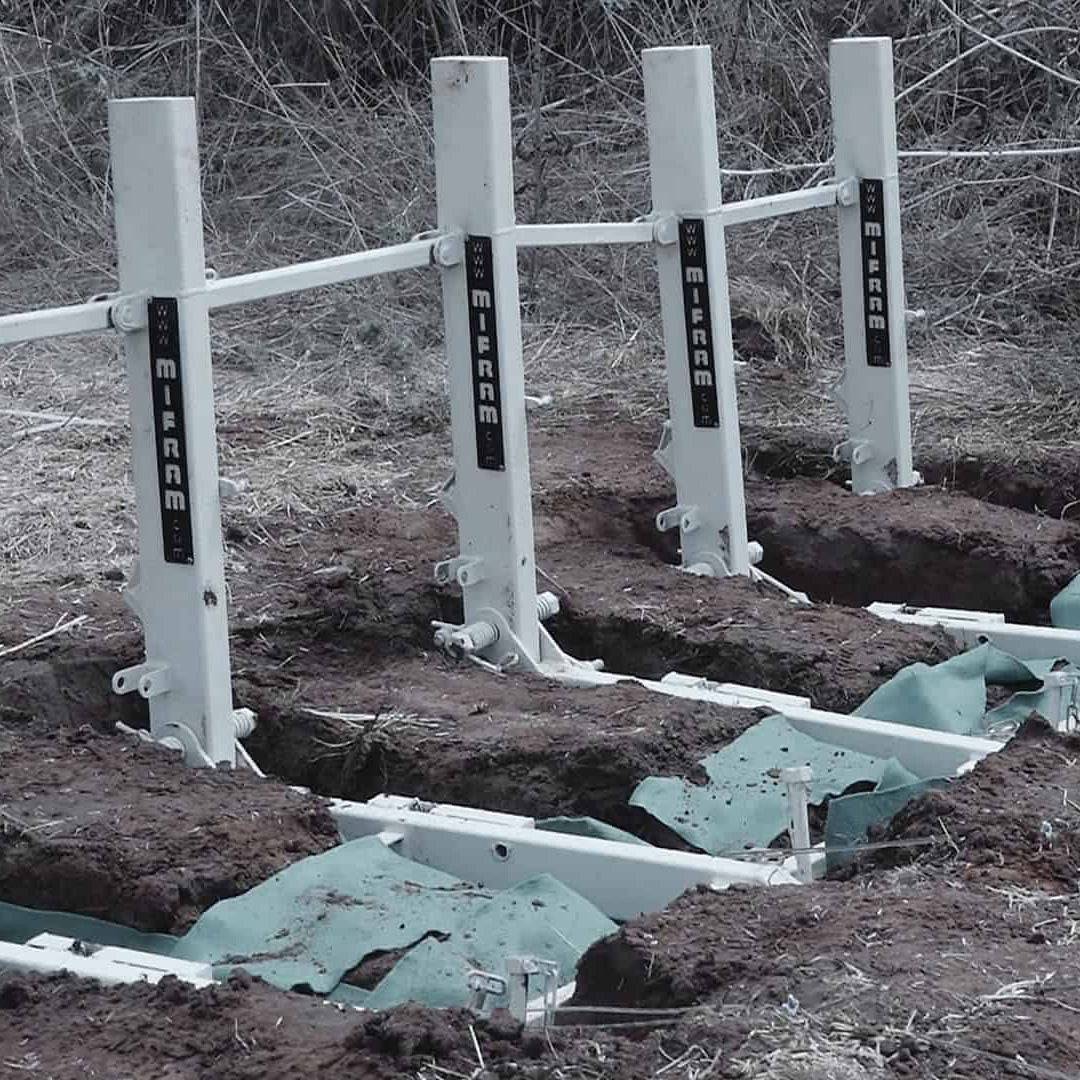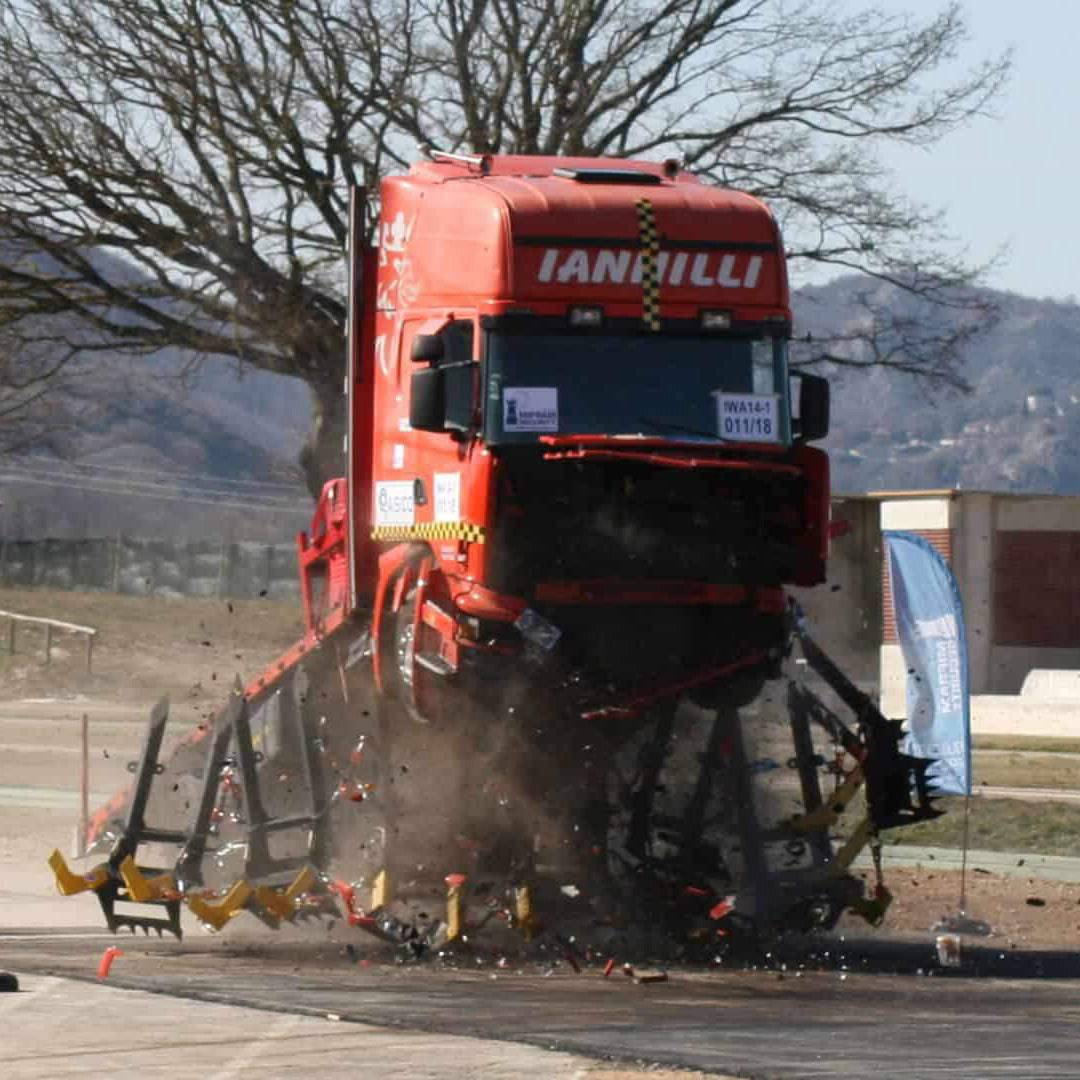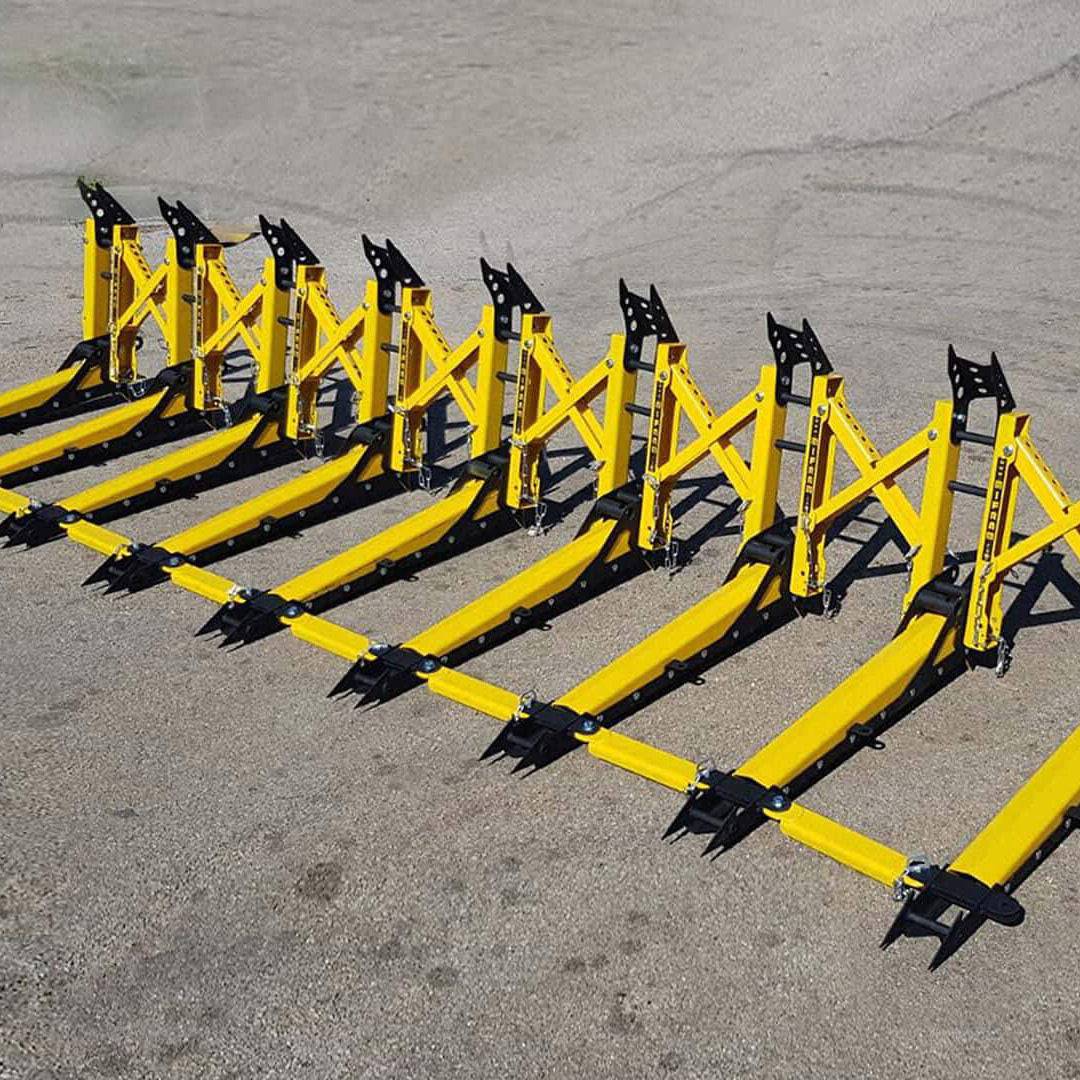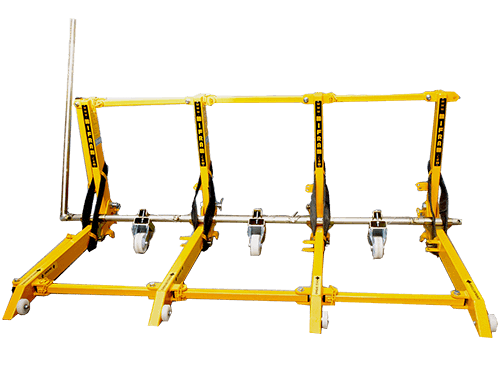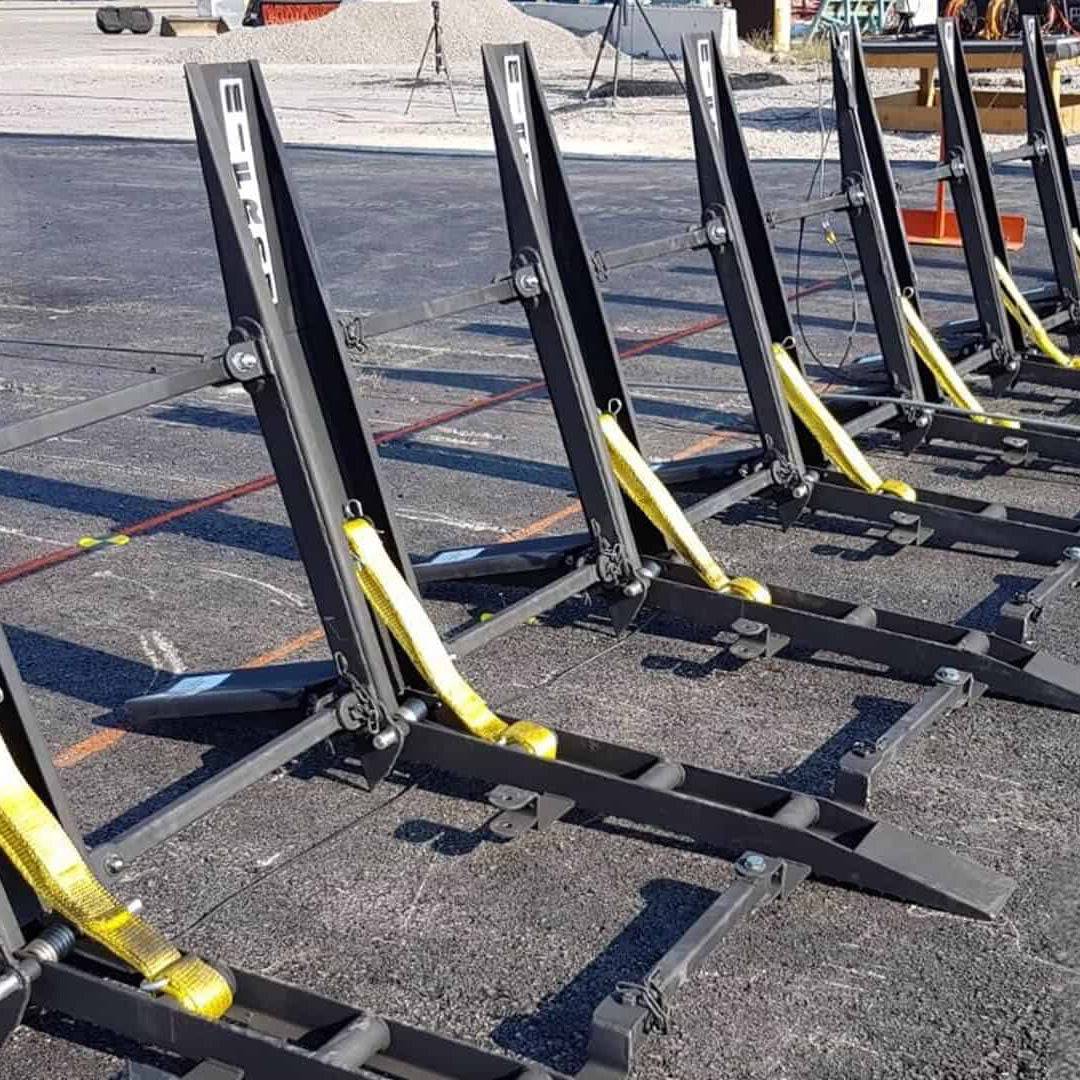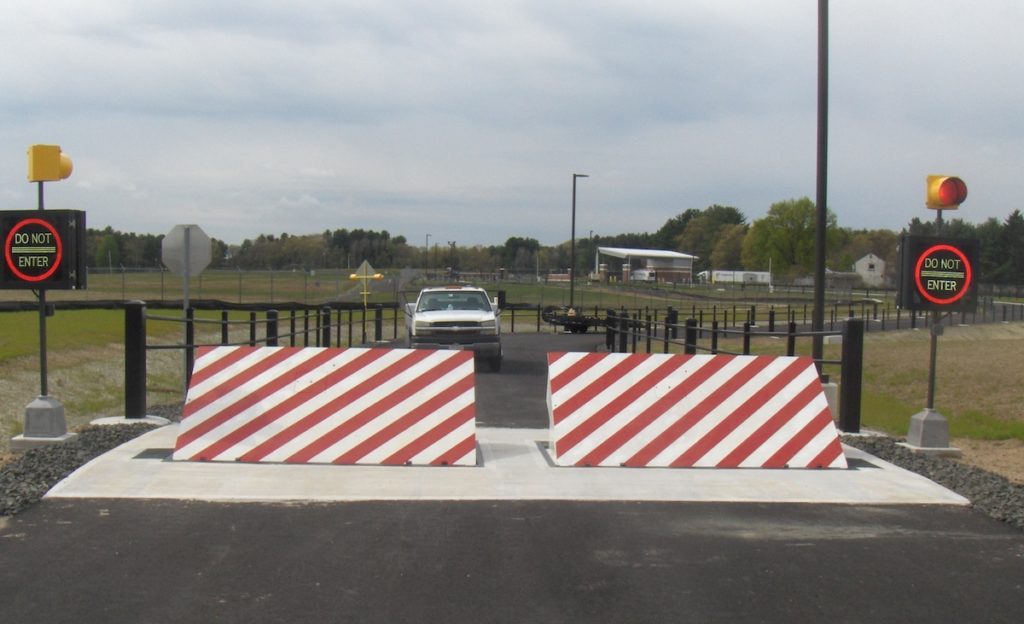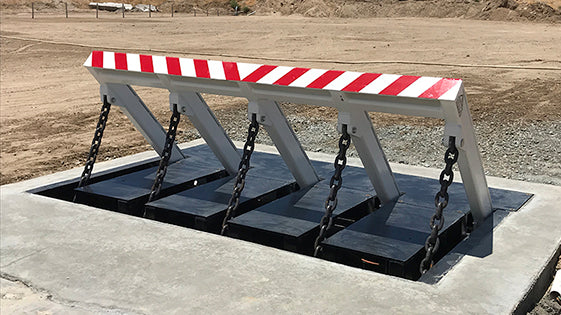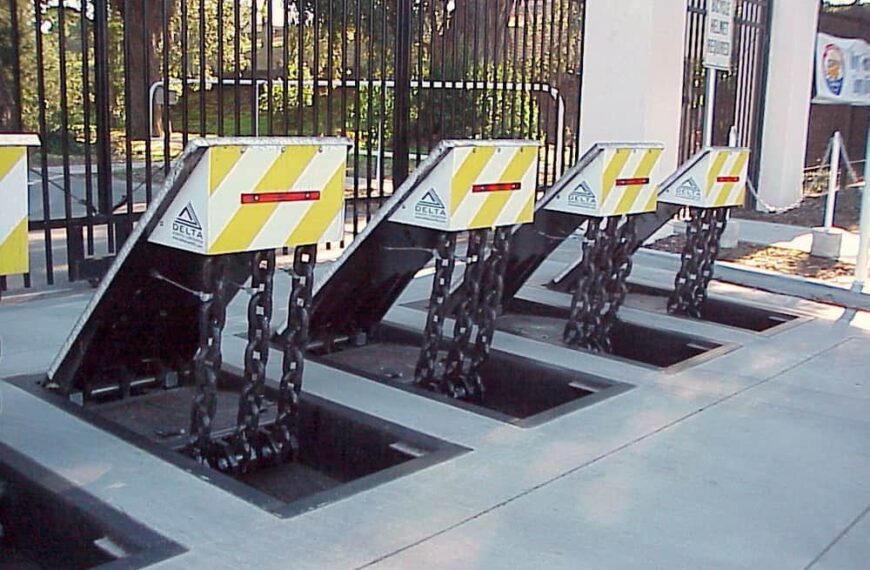Vehicle Barriers Solutions
Frequently asked questions
What Are Vehicle Barrier Solutions?
Vehicle barrier solutions encompass a range of physical security measures designed to prevent unauthorized or unwanted vehicle entry into a specific area. These barriers can be permanent or temporary and come in various forms, including:
- Bollards: Sturdy, vertical posts installed at intervals to block vehicle access while allowing pedestrian flow. They can be fixed, retractable, or even crash-rated for high-security areas.
- Gates: Operated manually or automatically, gates control vehicle entry and exit points at commercial properties, residential areas, and restricted zones.
- Wedges: Also known as wedge barriers, these are heavy-duty, often hydraulic systems capable of stopping high-speed vehicles. They're typically used at high-security locations.
- Crash Beams: Horizontal beams that can extend across a road or entranceway to stop vehicles, often used at military installations or government buildings.
These solutions serve to protect people, property, and sensitive areas from accidental or intentional vehicle incursions.
How Do Vehicle Barriers Enhance Security at Commercial Properties?
Vehicle barriers enhance security at commercial properties by creating a physical and psychological deterrent against unauthorized vehicle access. Specific scenarios include:
- Entrance Control: Gates or bollards can be used to regulate who enters a parking lot, preventing theft or vandalism.
- Perimeter Security: Fixed bollards or crash beams around the perimeter of a property deter ram-raiding or accidental vehicle entry.
- Restricted Area Protection: High-security areas within a commercial property can be protected with stronger barriers, like wedge barriers, to prevent targeted attacks.
These measures not only protect property and assets but also ensure the safety of employees and visitors.
What Types of Vehicle Barriers Are Best for Pedestrian Safety?
For pedestrian safety, especially in crowded areas or during events, the best vehicle barriers are:
- Portable Bollards: Easily moved and installed, offering flexibility for events or temporary needs without compromising pedestrian flow.
- Retractable Bollards: Can be lowered to allow emergency or authorized vehicle access when necessary, then raised to protect pedestrian zones.
- Soft Crash Barriers: Innovations like water or air-filled barriers can stop vehicles without causing significant harm to the occupants, ideal for areas with high pedestrian traffic.
These barriers provide effective protection while maintaining a balance between security and accessibility.
Can Vehicle Barriers Be Customized to Fit the Aesthetics of a Property?
Yes, vehicle barriers can be customized in various ways to blend with or enhance the aesthetics of a property. Customization options include:
- Material and Finish: Bollards and gates can be made from different materials (steel, concrete, wood) and finishes to match a building's exterior.
- Design and Shape: Barriers can be crafted with unique designs, patterns, or shapes that complement the architectural style of a property.
- Color: Custom colors can be applied to make the barriers visually pleasing or to fit with corporate branding.
Such customizations ensure that security measures do not detract from the visual appeal of a property.
What's the Cost of Installing Vehicle Barrier Solutions?
The cost of installing vehicle barrier solutions varies widely based on factors such as the type of barrier, materials, customization, and installation complexity. Roughly:
- Bollards: Can range from a few hundred dollars each for simple fixed bollards to several thousand for crash-rated or retractable models.
- Gates: Costs vary from a few thousand dollars for basic manual gates to tens of thousands for automated, custom-designed gates.
- Wedge Barriers and Crash Beams: These high-security barriers can cost tens of thousands to over a hundred thousand dollars, depending on the specifications and installation requirements.
Costs can also include maintenance, operation (in the case of automated systems), and potential integration with other security systems.
How Do Automatic Vehicle Barriers Work?
Automatic vehicle barriers operate using a control system that can be activated through various methods, such as keypads, card readers, remote controls, or even smartphone apps. These barriers typically use hydraulic, pneumatic, or electromechanical mechanisms to move into place, creating a physical barrier. They are commonly used at the entrances of parking lots, restricted areas, and controlled access points to manage vehicle flow efficiently.
What Are the Maintenance Requirements for Vehicle Barrier Systems?
Maintenance requirements for vehicle barrier systems include regular inspections, cleaning, lubrication (for moving parts), and testing of control systems to ensure reliable operation. The frequency and type of maintenance depend on the barrier system's complexity and usage level. Establishing a maintenance plan with a professional service provider is recommended to address potential issues proactively and extend the system's lifespan.
Are There Temporary Vehicle Barrier Solutions for Events?
Yes, there are temporary vehicle barrier solutions specifically designed for events, such as portable bollards, lightweight barriers, and water-filled barricades. These can be quickly deployed to secure perimeters, control crowds, and protect pedestrian areas, offering flexibility and effective protection without the need for permanent installation.
How Quickly Can Vehicle Barriers Be Deployed in an Emergency?
The deployment speed of vehicle barriers in an emergency varies based on the type of barrier but can be remarkably fast for certain models. Portable or temporary barriers can be set up in a matter of minutes, providing immediate protection. Automatic retractable bollards and wedge barriers can be activated to rise or deploy within seconds, effectively securing an area almost instantly. This rapid deployment is crucial for responding to emergencies, enabling swift action to protect people and property.The deployment speed of vehicle barriers in an emergency varies based on the type of barrier but can be remarkably fast for certain models. Portable or temporary barriers can be set up in a matter of minutes, providing immediate protection. Automatic retractable bollards and wedge barriers can be activated to rise or deploy within seconds, effectively securing an area almost instantly. This rapid deployment is crucial for responding to emergencies, enabling swift action to protect people and property.
What Certifications Should Reliable Vehicle Barrier Solutions Have?
Reliable vehicle barrier solutions should have certifications that demonstrate compliance with industry standards for safety, durability, and performance. Key certifications include:
- ASTM International (American Society for Testing and Materials): Certifications for crash resistance and impact standards.
- PAS 68 (Publicly Available Specification): A British standard for vehicle security barriers, including tests for impact resistance.
- IWA 14-1 (International Workshop Agreement): Similar to PAS 68, it provides specifications for the performance of vehicle security barriers.
- ISO 9001: Certification for quality management systems, ensuring the manufacturer adheres to quality standards in production.
These certifications assure customers that the barriers meet rigorous safety and quality criteria.
How Can Vehicle Barriers Be Integrated With Other Security Systems?
Vehicle barriers can be integrated with other security systems to create a comprehensive security solution. This integration can include:
- Surveillance Cameras: To monitor and record access points, providing visual verification of incidents.
- Access Control Systems: Such as card readers or biometric scanners, to automate and secure vehicle entry.
- Alarm Systems: To alert security personnel of unauthorized attempts to breach the barrier.
- Intercom Systems: For communication between drivers and security personnel at entry points.
Integrating these systems enhances overall security by combining physical barriers with electronic surveillance and control.
What Are the Environmental Impacts of Installing Vehicle Barriers?
The environmental impacts of installing vehicle barriers can vary, but manufacturers and installers are increasingly adopting sustainable practices, such as:
- Using Recycled Materials: For barrier construction to reduce waste.
- Energy Efficiency: Especially in automated barriers, where low-energy hydraulic or electromechanical systems minimize power consumption.
- Longevity and Maintenance: Designing barriers for durability and ease of maintenance reduces the need for frequent replacements and repairs, lowering the environmental footprint.
Environmental considerations are becoming an integral part of the design and implementation of vehicle barrier solutions.
How Effective Are Vehicle Barriers in Preventing Vehicle-Ramming Attacks?
Vehicle barriers are highly effective in preventing vehicle-ramming attacks, a fact supported by numerous case studies and real-world incidents. High-security barriers, such as crash-rated bollards and wedge barriers, are designed to stop vehicles of various sizes and speeds, providing critical protection for sensitive areas and crowded public spaces. Testimonials from organizations and government entities that have implemented such barriers often highlight their effectiveness in averting potential threats and ensuring the safety of people and assets.
What are the different models of Vehicle Barriers?
There are the different models of Vehicle Barriers including Mifram, Delta Scientific, and Magna Spikes.

Learn More from our Blog
What are Mifram Barriers and how do they work?
With their modular vehicle barriers and crowd protection barriers, Mifram is a leading name in certified safety solutions

